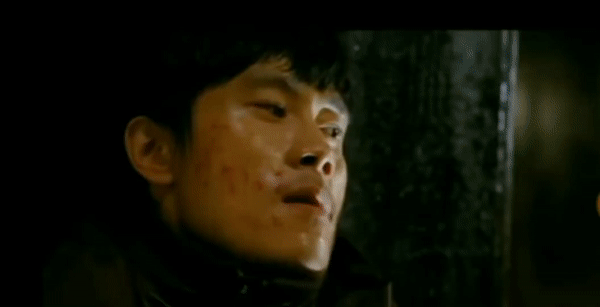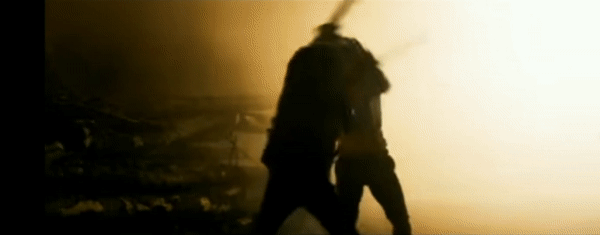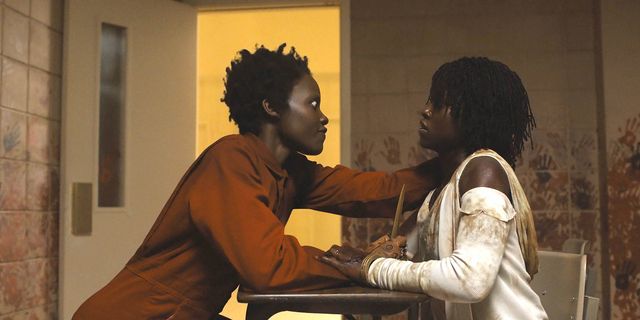Fight scenes, and their close relative dance scenes, aren’t intended simply to kill time or distract an audience from how bland the story would be otherwise. They’re intended to convey emotions and themes that are more either more intense than words will allow or, as is often the case with violence in the real world, more complex than the characters can manage to articulate. This is a pretty straightforward observation tiptoeing on cliche, but it’s one that a lot of mainstream action movies seem to take for granted.
Fight scenes in summer blockbusters and other big budget affairs are often sprinkled near evenly across the film’s runtime as if to say “Ok, here’s another one, you’ve earned it.”And when they come, they’re a typical mess of jumpy camerawork, jukebox music cues and generic choreography that largely hasn’t changed over the last two decades.
There are a lot of movies that I’ve really enjoyed over the last few years, even among the bubblegum summer blockbusters. But I honestly can’t recall a lot of standout fight scenes in any of these movies. Unless we’re talking about horror films, in which case these scenes are often what stand out to me the most.

Yes, that was Busta Rhymes kicking Michael Meyers out a window and into a conveniently placed noose, and you’re welcome. I’m the hero you don’t need or deserve.
Violence in the horror genre can sometimes be pointless and gratuitous, but I think mainstream films could borrow a lot from the horror films that get it right. Here’s three things they absolutely should borrow, listed in no particular order because listicles are against my religion.
Fight Scenes Should Tell a Story
I touched on this earlier, but fight scenes shouldn’t be a palate cleanse to distract from the deeper themes and story, they should be a bright and explicit expression of those elements. You can watch every fight scene in any DC Superhero movie released over the past decade at 5x speed without missing a thing. At least as long as you know that both Superman and Batman’s mothers are named Martha.
By contrast, the intense ballet inspired showdown at the end of Jordan Peele’s Us is not only brilliantly scored and visually riveting, it’s also pretty integral to the story Peele is telling.

This scene isn’t a distraction from the plot, it’s a beautiful, visceral restatement of the film’s thesis. Us is ultimately a parable about privilege and resources and pilfered birthrights. An American family is relentlessly pursued by their own twisted doppelgangers, the tethered, who have long been denied the basic comforts regular families enjoy. But no matter how much the tethered struggle to rise above their station they’ll never manage it because they simply started out too far behind. The damage has already been done.
This bears out in the final conflict, at first Red is a whirlwind of perfect, dangerous movements and the victory she has spent her life preparing for seems assured. But her mind has been incurably damaged by her time below ground, and in the middle of the fight it slowly becomes clear that she is often dancing about without purpose, and the fight ends abruptly as she dances right into the sharp end of Adelaide’s fire poker.
These scenes teach us about the characters, their ruthlessness, their strengths and their shortcomings. It’s pretty rare that a standard action movie is ever as attentive to character work during a big fight.
Fight Scenes Should Go For It
The Old Guard is an incredibly well crafted action film with a lot of unique ideas, but I found myself wanting a little more out of every action sequence. The premise of a group of immortal warriors tearing through a private army should logically lead to some violent and over the top confrontations. But with the exception of the drop seoi-nagi that Marwan Kenzari delivers to a stuntman who either turned into a dummy at the last second or absolutely had to be cleaned off the set with a mop and bucket, it mostly provides standard fight choreography without any particularly memorable shocks or surprises.

This isn’t because Gina Prince Blythewood is a bad director, it’s because she’s a very experienced director and knows exactly how far she can push the violence in an action movie.
Ji-Woon Kim’s I Saw The Devil, a revenge thriller about a cop whose only goal is to kick the serial killer he’s chasing in the face as many times as he possibly can, is every bit as much a horror film as it is an action film. So it never encounters that particular problem. Holding back is both unnecessary and discouraged in the horror genre. The performers and stuntmen in I Saw The Devil are incredibly technical and clean, but the fights they’re portraying are always sensational and gruesome.

This obviously isn’t an approach that is going to work for every film, I really don’t need to see Spider-Man pull anyone’s head off. But action sequences are so often devoid of surprises that it would be nice to occasionally see a mainstream action film try to set itself apart with something a tad uncomfortable.
Fight Scenes Can Still Be Great On a Budget

1980’s Motel Hell was produced on an extremely modest budget, and the lead villain was aging 40’s heartthrob Rory Calhoun. There’s no reason for a movie like that to have any action scenes at all, let alone good ones. But near the climax of the story, the town sheriff confronts Calhoun in a chainsaw sword fight so iconic that it has been parodied and referenced over and over, including most recently by Panos Cosmatos in Mandy.

Money is not only something of a crutch that can sometimes be used to smooth over bad decisions that probably should have just been changed, it also greatly influences what can and can’t be done in a film. Producers and investors in the film industry are the same as investors in just about any industry, that is to say they are largely uncreative and risk averse. Given that, the idea of ending a film with a pig mask chainsaw fight might make them a little cagey. Especially when a series of Krav Maga elbow nudges and a headscissor takedown is a time tested formula that never let anyone down.
Motel Hell was filmed in the late 70’s, decades before a series of burly mustachioed men in tactical vests convinced all of Hollywood that soldiers in the most savage warfronts in the world were definitely rubbing their forearms into each others necks at high velocity when they ran out of bullets and didn’t have time to fish a knife out of their backpack. And Rory Calhoun wasn’t exactly a spring chicken in that stage of his career. But even without all the trappings of a traditional action sequence, the final confrontation manages to be creative and tense without a horde of stuntmen.
For the most part I’m fairly easy to please, and summer blockbusters can probably take my money without taking any chances with their formula for the foreseeable future. But wouldn’t our world be just a little better if, just once, one of these clean cut, spotless action stars stumbled upon a cursed amulet and exploded into a martial arts savvy werewolf? It’s something to think about, Hollywood.

